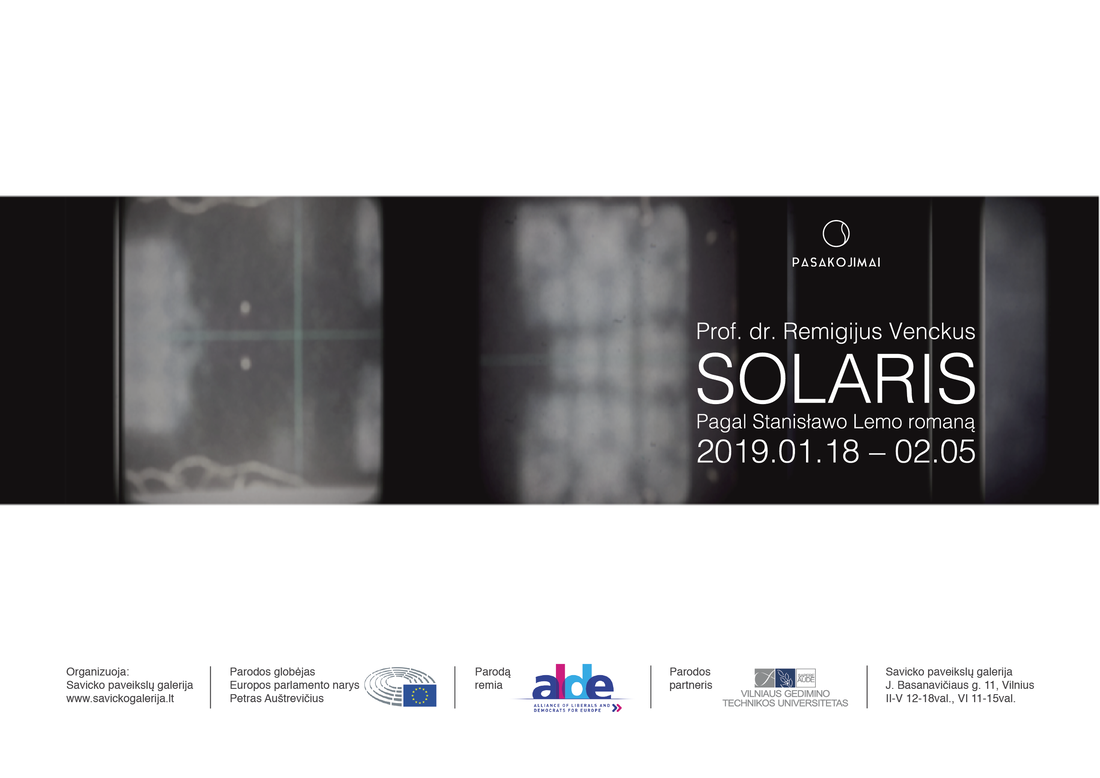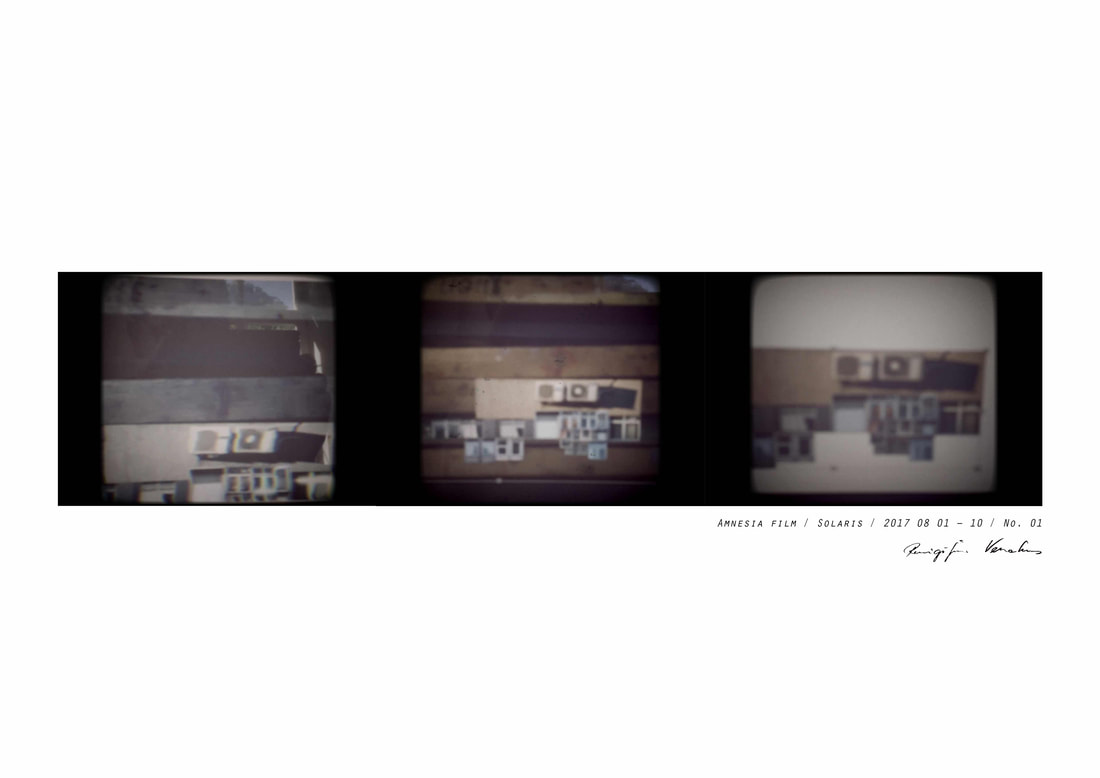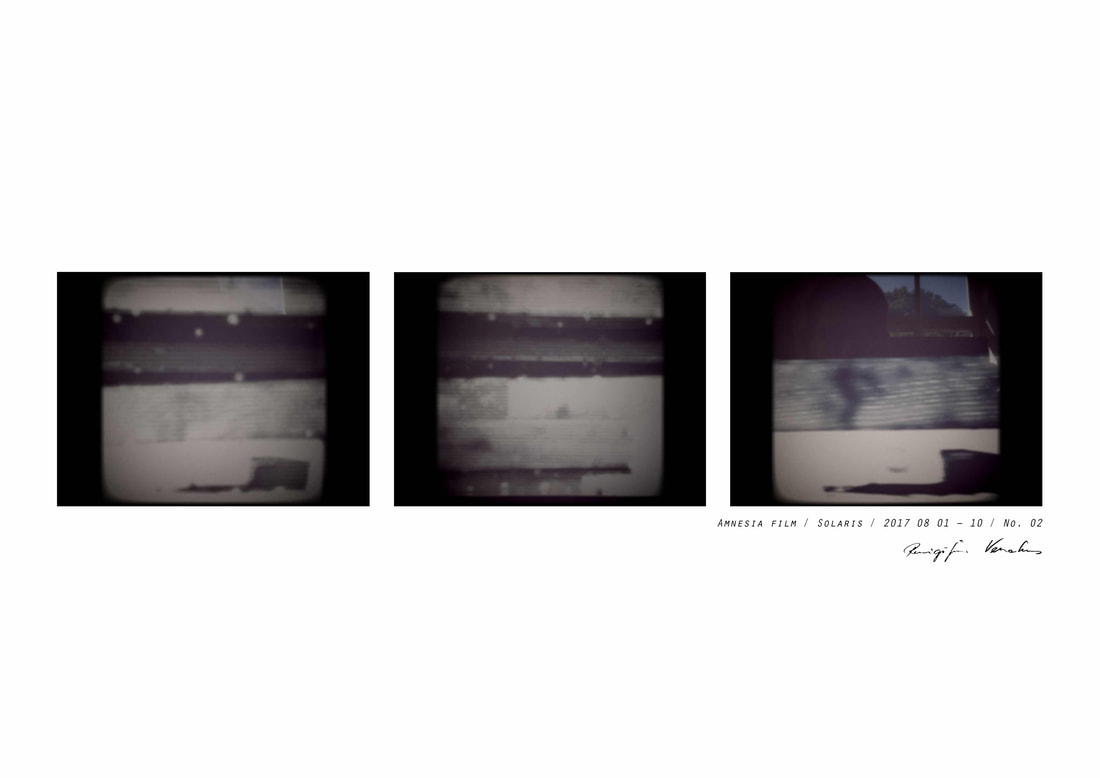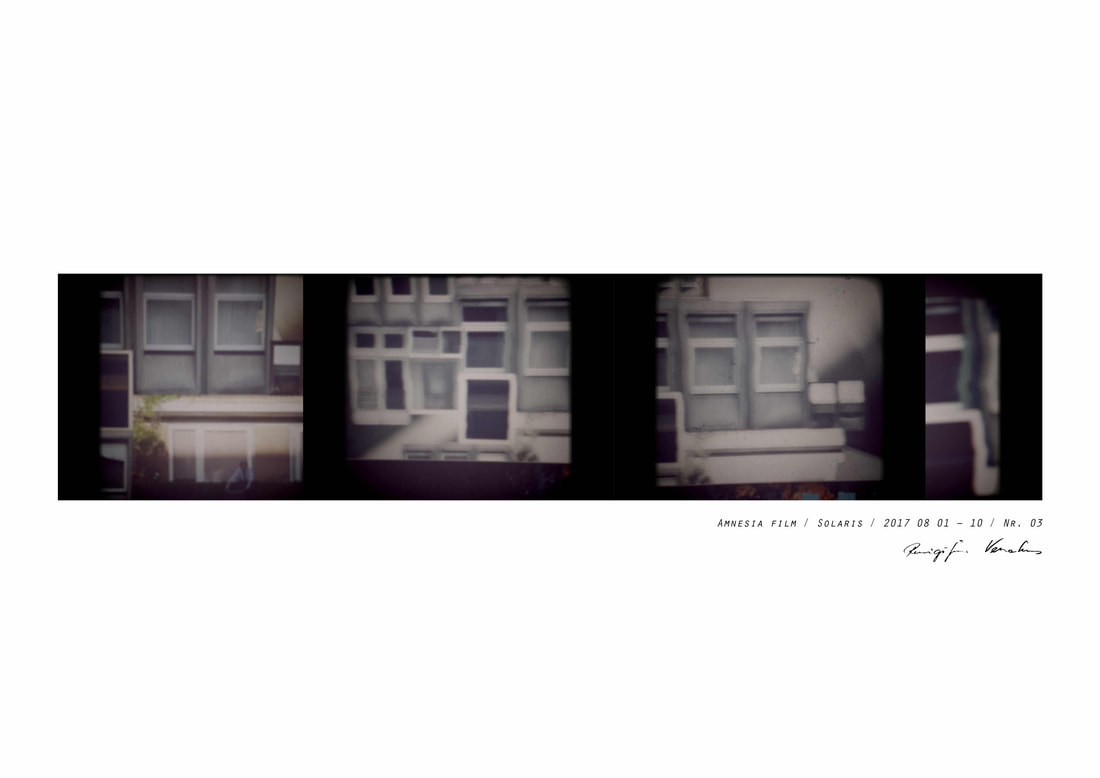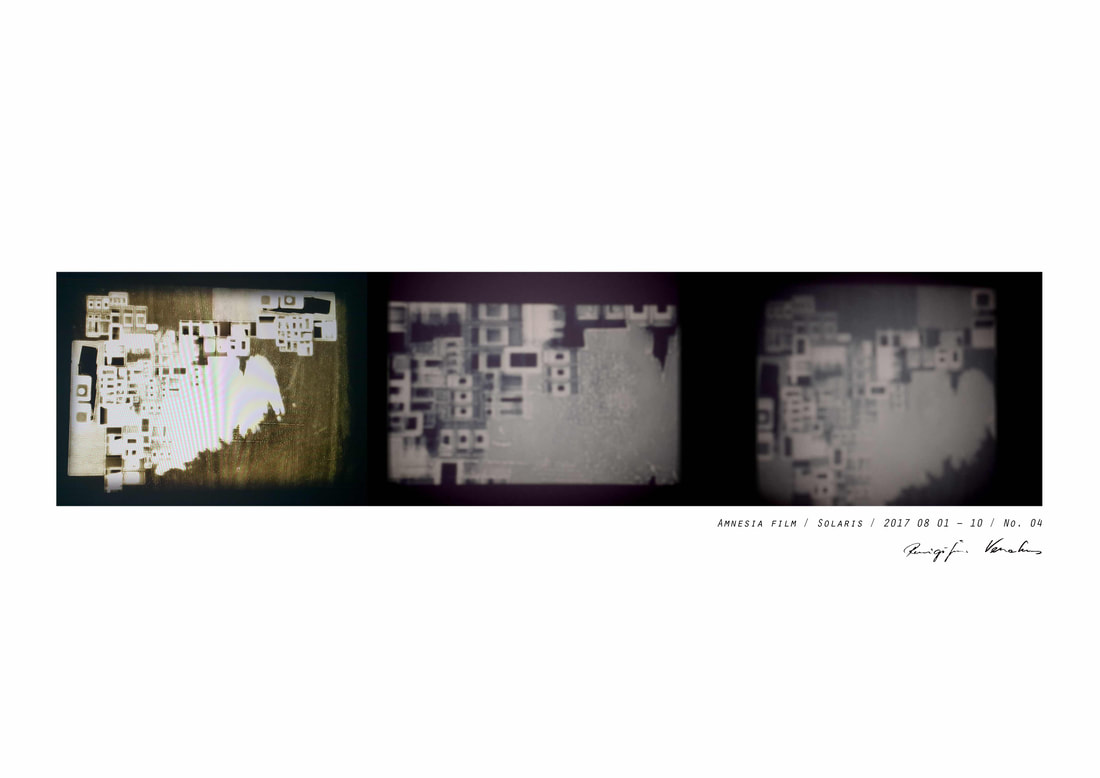Paroda: 2019.01.18 – 02.25. Galerijoje atidaroma Lietuvoje gerai žinomo medijų menininko ir kritiko Vilniaus Gedimino technikos universiteto Fundamentinių mokslų fakulteto Grafinių sistemų katedrosprofesoriaus dr. RemigijausVenckaus paroda. Menininkas pristato eksperimentinę parodą, sukurtą pagal garsųjį Stanisławo Lemo fantastinį romaną Soliaris (1961). Paroda atidaroma sausio18 dieną 18 valandą Savicko paveikslų galerijoje (J. Basanavičiaus g. 11, Vilnius).
Autoriaus žodis. Dažnai pasiilgstu knygų skaitymo, kai galiu neskubėdamas gilintis į meninį tekstą. Gilios literatūros ilgesys mane paskatino 2017-ųjų vasarą perskaityti įsimintiną Nobelio premijos laureato Stanislawo Lemo fantastinį romaną Soliaris.
Puslapis po puslapio labai dėmesingai skaičiau kiekvieną sakinį. Buvau sužavėtas meistriškai sukurtu turiniu. Lemo romanas provokavo naujus retorinius klausimus apie kūrinio logiką ir meistriškai išplėtotą pasakojimą, apie paslaptingą ir neištirtą planetą Soliarį.
Dar ir dabar mane žavi autoriaus idėja, kad Soliaris egzistuoja kaip mąstantis vandenynas, kuris, reaguodamas į skirtingas žmonių nuotaikas, mintis ir prisiminimus kopijuoja ir realizuoja šių minčių pavidalus. Kai nuo mąstančio vandenyno atribojamos planetą lankančių žmonių mintys ir prisiminimai,tuomet Soliaris ima kopijuoti savo paties sukurtus pavidalus. Naujos struktūros vienu metu verčia ne tik jomis domėtis ir jas tirti, bet ir reiškiant žmogišką baimę viską naikinti. Knygos pabaiga byloja apie didžiulę žmogaus vienatvę, kuri pateisinama užkariaujant kitas planetas, pavergiant gyvybę ir sunaikinant civilizacijas. Taip žmogus ne tik demonstruoja savo menkumą, siaurą mastymą, savojo ego galią, bet ir įsitraukia į begalinį prievartos aktą. Mes ieškome to, kas gali pateisinti mūsų pačių kaltę, nutiesiančią kelią vienatvės ir nusivylimo link.
Soliaris mane įkvėpė sukurti naują fotografijų ciklą,kurį galima suvokti kaip pagarbos ženklą, skirtą Lemo kūrybos palikimui. Fotografuodavau senus pastatus, taikydamas įvairias kūrybos priemones, kūriau naujas, niekur neegzistuojančias struktūras. Taip aš ne tik išreiškiu savo požiūrį į vienatvę ir kuriu neegzistuojančią realybę, bet ir klausiu savęs apie jos atradimą kaip naują savo paties tapatybės dalį. Savotišką kūrybinį savianalizės kelią aš pradėjau dar prieš 15 metų. Įdėmiai analizuodamas nenusisekusius kadrus, supratau, kad skirtumas tarp pavykusio ir nepavykusio, egzistuojančio ir neegzistuojančio iš tikrųjų nėra toks didelis. Kadangi seniau sukurti atvaizdai vis dar verčia mane mąstyti apie ateitį, todėl per juos aš grįžtu į savo atsiminimų, išgyventų jausmų, kvapų ir prisilietimų labirintą.
Panašiai kaip Soliaris, mano fotografija atsiveria kaip daugiasluoksnis praeities erdvėlaikis, kuris leidžia pasinerti į užmirštą ir daugiau nebeegzistuojančią (ne)realybę bei išlaisvina neįmenamų klausimų virtinę: kas iš tikrųjų yra mano laikas ir erdvė, koks mano gyvenimo kelias, kokia kūrybos kryptis, ar aš egzistuoju, o gal mane supanti aplinka yra kieno nors sukurpta ir nepriekaištinga kopija. Mano kūriniai mane patį veikia panašiai kaip Lemo Soliaris – kai stebiu ir analizuoju kūrinius, visada skaitau save lyg nesibaigiantį pasakojimą…
Soliaris – it neįveikiama matematikos formulė, efemeriškas džiazas, kuris lydi mane neribotos improvizacijos keliu. Soliaris – tai lyg automatinis rašymas, išplėtotas XX amžiaus siurrealistų mene. Aš, tarsi ryškios filosofijos ir mokslo figūros, atsigręžiu atgal ir ieškau savojo Soliario. Aš vis dar puoselėju negęstančią svajonę, jį atradus suvokti savo vaidmenį mąstančiame ir neegzistuojančiame vandenyne… Galbūt aš taip grįžtu į bet kokios pradžios pradžią, neverbalios Dievo kalbos link, kur būtis žaižaruoja visomis savo spalvomis, kur aš niekada dar neturėjau galimybės suvokti save patį…
Apie autorių.Prof. dr. Remigijus Venckusyra medijų meno ir kultūros tyrinėtojas, medijų menininkas. 2014 metaisVilniaus dailės akademijoje ir Lietuvos kultūros tyrimų institute apgynė humanitarinių mokslų daktaro disertaciją. Šiuo metu Venckus yra Vilniaus Gedimino technikos universiteto Fundamentinių mokslų fakulteto Grafinių sistemų katedros profesorius. Anksčiau dėstė Vytauto Didžiojo, Vilniaus, Kazimiero Simonavičiaus, Šiaulių universitetuose ir Vilniaus dailės akademijoje. Yra18-os mokslo straipsnių, 5-jų mokslo pranešimų, skaitytų tarptautinėse konferencijose ir 20-ies – respublikinėse mokslo konferencijose autorius.
Venckus kuria fotografijos meną tema – atmintis, laikas ir individuali patirtis bei vyriško kūno ir seksualumo interpretacijos. 2010 metais atstovavo Lietuvai tarptautinėje erotinio vizualiojo meno parodoje Lenkijoje. Surengė 47 autorines parodas Lietuvoje ir 4 užsienyje.
Lietuvoje Venckus yra žinomas kaip medijų kultūros ir meno kritikas, recenzuojantis šiuolaikinio meno parodas ir rašantis apie tapybą, fotografiją ir medijas. Jo recenzijose pristatomos parodos, vykstančios ne tik Lietuvoje, bet ir Danijoje, Lenkijoje, Rusijoje, Latvijoje, JAV ir kitose šalyse. Venckus yra 329 kritinių straipsnių apie meną ir kultūrą autorius.
Exhibition: 18.01.2019 – 05.02.2019. ’Solaris’ is a new art exhibition of a well-known Lithuanian media artist Prof. Ph. D. Remigijus Venckus. The exhibitionwill be opened on 18pm. 18 Januaryin Savickas’ Art Gallery.
Idea: On the Solaris Ocean. Lately I have not had much time for reading fiction, but I am actually missing the period of bookworming which happened in my life some years ago. Thus, in the summer of 2017, I went back to my already forgotten activities of reading. Half of my vacation I spent by some Lithuanian lakes with interesting books having nothing to do with my academic life. I read one of the most memorable Sci-Fi book ‘Solaris’ written in 1961. The author of this impressive masterpiece was a Nobel Prize winner, Polish intellectual and philosopher Stanislaw Lem. I had never read anything by him before, but I had seen some films after his books.
From page to page I read all the sentences very attentively and was greatly fascinated by the content. Lem’s story raised some new rhetorical questions in my mind: I kept asking myself about the strong logics in the story and carefully delivered explanations of the mystical unexplored planet of Solaris.
Even now I am fascinated by the author’s idea that Solaris is an intellectual ocean, which can react to any human thought, wish and dream. Thus, any intellectual creature can provoke the planet to make copies of its real or imaginable previous life or relations with someone; even with those that had never existed or be possible in the future world. The creatures’ wishes, ideas and non-realised dreams could sometimes limit the genesis of the planet. Thus, Solaris became a self copying system, in which curious people could be attracted and scared at the same time by these new and never seen forms before.
At the end of the book, in conclusion, Lem provoked us to think about our extraordinary and expandedloneliness under the sun, with humans always wanting to colonise new planets, lives and civilisations. Thus, people are disclosed as small, narrow-minded and involved in terrorism actions because of their personal paltry egos. In all our lives we are so busy thatwe can’t see those logical factors; we are still searching for someone who could be declared guilty about our loneliness and unhappiness.
‘Solaris’ has impressed me so much that I have been starting to create a new photo-cycle, dedicated to Lem’s magnificent Sci-Fi idea. From time to time, I have been walking with my photo camera taking images of strange and odd architectural details, combining different shots into new structures to cherish a new impressive cycle, which could intuitively express my feelings about loneliness, a loneliness already copied and distorted in many different photos of a new non-existing reality. Who knows, maybe this new reality is my never ever objectively evaluated existence…
My thoughts on the ‘Solaris’ discourse are not new, I have been thinking this way since my teenager’s times when I began creating experimental and then unsuccessful images. More than 15 years later, I started attentively analysing these images and found a new understanding, that different and then unsuccessful overexposed shotswere not so bad and deserved some attention. Thus, the old shots are still provoking me to think about visuality and its meaning to the future prospects. Those images have been getting me back into the labyrinth of my past memories, feelings, smells and tactile experiences.
From time to time, photography opens up to me as the surface of the previous time-space experiences, like the intelligent ‘Solaris’, which enabled me to immerse myself into my forbidden and never more exciting (un)real reality. Thus, I have been attacked with rhetorical questions without concrete answers: what is my time and space, my way of life, directions in my creation, am I real or is my environment artificially copied by someone who is more intelligent than any creatures in the world, etc.?
However, the (non)ending questions make me stronger and more solid in my approaches towards images, which are still addressing to me questions about the feelings I already had in the past and am still getting now, appreciating my expectations, connections with surroundings, my daily lifeinteractions amongrelatives and co-workers from the art or academic field. My photos affect me in the same way as Lem’s ‘Solaris’ does: while watching and analysing my images I always read myself as a never ending database…
The question is what is ‘Solaris’ and it seams to me as an intangible mathematical formula, as ephemeral jazz, which leads me into the a non limited improvisation; it is the same as the automatic writing delivered and distributed by surrealists in the 20thcentury. Still, I keep turning back to the past age, where the great philosophers, artists and scientists were searching for they own and universal ‘Solaris’. I still have a romantic desire to find the true ‘Solaris’ and understand my role in the intelligent ocean of (non)existing phenomena… Maybe, I could come back to the beginning of any beginnings, to nonverbal God’s language, where everything is understandable in any (un)known dimension, where I have never had a possibility to find myself in the truth yet…
About the Artist. Prof. Dr. R. Venckus is an art critic and media artist. In 2014 he defended his Ph. D. thesis in the humanities, Jacques Derrida Deconstruction Theory in Video Art Analysis, at Vilnius Academy of Arts.
R. Venckus is Professor at the Department of Graphics Systems of the Faculty of Fundamental Sciences of Vilnius Gediminas Technical University. He is the author of 18 scientific articles, 5 research reports presented in international conferences and 20 research reports published in republican scientific conferences. Previously he working as Associate Professor at Vytautas Magnus University, and the director of Creative Society and Economy Institute of Kazimieras Simonavičius University; he taught at Vilnius University, Šiauliai University, Vilnius Academy of Arts.
R. Venckus is also a media artist usually engaged in the art of photography. The main theme of creation comprises memory, time and personal experience as well as the male body and sexuality interpretations. In 2010 he represented Lithuania in the international erotic visual art exhibition (National Museum in Poland). He participated in 30 international exhibitions and 37 republican exhibitions, set up 47 solo exhibitions in Lithuania and 4 abroad.
R. Venckus is known in Lithuania as an art critic engaged in reviewing contemporary art exhibitions and writing about painting, photography and video art. His critical reviews on well-known Lithuanian and Western artists make an integral part of exhibitions held not only in Lithuania but also in USA, Denmark, Poland, Russia, Latvia, etc. R. Venckus is the author of 329 critical articles on art and culture.
Idea: On the Solaris Ocean. Lately I have not had much time for reading fiction, but I am actually missing the period of bookworming which happened in my life some years ago. Thus, in the summer of 2017, I went back to my already forgotten activities of reading. Half of my vacation I spent by some Lithuanian lakes with interesting books having nothing to do with my academic life. I read one of the most memorable Sci-Fi book ‘Solaris’ written in 1961. The author of this impressive masterpiece was a Nobel Prize winner, Polish intellectual and philosopher Stanislaw Lem. I had never read anything by him before, but I had seen some films after his books.
From page to page I read all the sentences very attentively and was greatly fascinated by the content. Lem’s story raised some new rhetorical questions in my mind: I kept asking myself about the strong logics in the story and carefully delivered explanations of the mystical unexplored planet of Solaris.
Even now I am fascinated by the author’s idea that Solaris is an intellectual ocean, which can react to any human thought, wish and dream. Thus, any intellectual creature can provoke the planet to make copies of its real or imaginable previous life or relations with someone; even with those that had never existed or be possible in the future world. The creatures’ wishes, ideas and non-realised dreams could sometimes limit the genesis of the planet. Thus, Solaris became a self copying system, in which curious people could be attracted and scared at the same time by these new and never seen forms before.
At the end of the book, in conclusion, Lem provoked us to think about our extraordinary and expandedloneliness under the sun, with humans always wanting to colonise new planets, lives and civilisations. Thus, people are disclosed as small, narrow-minded and involved in terrorism actions because of their personal paltry egos. In all our lives we are so busy thatwe can’t see those logical factors; we are still searching for someone who could be declared guilty about our loneliness and unhappiness.
‘Solaris’ has impressed me so much that I have been starting to create a new photo-cycle, dedicated to Lem’s magnificent Sci-Fi idea. From time to time, I have been walking with my photo camera taking images of strange and odd architectural details, combining different shots into new structures to cherish a new impressive cycle, which could intuitively express my feelings about loneliness, a loneliness already copied and distorted in many different photos of a new non-existing reality. Who knows, maybe this new reality is my never ever objectively evaluated existence…
My thoughts on the ‘Solaris’ discourse are not new, I have been thinking this way since my teenager’s times when I began creating experimental and then unsuccessful images. More than 15 years later, I started attentively analysing these images and found a new understanding, that different and then unsuccessful overexposed shotswere not so bad and deserved some attention. Thus, the old shots are still provoking me to think about visuality and its meaning to the future prospects. Those images have been getting me back into the labyrinth of my past memories, feelings, smells and tactile experiences.
From time to time, photography opens up to me as the surface of the previous time-space experiences, like the intelligent ‘Solaris’, which enabled me to immerse myself into my forbidden and never more exciting (un)real reality. Thus, I have been attacked with rhetorical questions without concrete answers: what is my time and space, my way of life, directions in my creation, am I real or is my environment artificially copied by someone who is more intelligent than any creatures in the world, etc.?
However, the (non)ending questions make me stronger and more solid in my approaches towards images, which are still addressing to me questions about the feelings I already had in the past and am still getting now, appreciating my expectations, connections with surroundings, my daily lifeinteractions amongrelatives and co-workers from the art or academic field. My photos affect me in the same way as Lem’s ‘Solaris’ does: while watching and analysing my images I always read myself as a never ending database…
The question is what is ‘Solaris’ and it seams to me as an intangible mathematical formula, as ephemeral jazz, which leads me into the a non limited improvisation; it is the same as the automatic writing delivered and distributed by surrealists in the 20thcentury. Still, I keep turning back to the past age, where the great philosophers, artists and scientists were searching for they own and universal ‘Solaris’. I still have a romantic desire to find the true ‘Solaris’ and understand my role in the intelligent ocean of (non)existing phenomena… Maybe, I could come back to the beginning of any beginnings, to nonverbal God’s language, where everything is understandable in any (un)known dimension, where I have never had a possibility to find myself in the truth yet…
About the Artist. Prof. Dr. R. Venckus is an art critic and media artist. In 2014 he defended his Ph. D. thesis in the humanities, Jacques Derrida Deconstruction Theory in Video Art Analysis, at Vilnius Academy of Arts.
R. Venckus is Professor at the Department of Graphics Systems of the Faculty of Fundamental Sciences of Vilnius Gediminas Technical University. He is the author of 18 scientific articles, 5 research reports presented in international conferences and 20 research reports published in republican scientific conferences. Previously he working as Associate Professor at Vytautas Magnus University, and the director of Creative Society and Economy Institute of Kazimieras Simonavičius University; he taught at Vilnius University, Šiauliai University, Vilnius Academy of Arts.
R. Venckus is also a media artist usually engaged in the art of photography. The main theme of creation comprises memory, time and personal experience as well as the male body and sexuality interpretations. In 2010 he represented Lithuania in the international erotic visual art exhibition (National Museum in Poland). He participated in 30 international exhibitions and 37 republican exhibitions, set up 47 solo exhibitions in Lithuania and 4 abroad.
R. Venckus is known in Lithuania as an art critic engaged in reviewing contemporary art exhibitions and writing about painting, photography and video art. His critical reviews on well-known Lithuanian and Western artists make an integral part of exhibitions held not only in Lithuania but also in USA, Denmark, Poland, Russia, Latvia, etc. R. Venckus is the author of 329 critical articles on art and culture.
https://www.behance.net/gallery/74816443/SOLARIS-20182019?fbclid=IwAR3SVIm8_Y0bGmRc7JaM61TcQdTMGPKDxTZugQeSFPwezafl0VLiMSXK-UE
http://www.venckus.eu/
https://www.vgtu.lt/vgtu-naujienu-portalas/naujienos/atidaroma-vgtu-profesoriaus-paroda/246059?nid=303082
http://culture.venckus.eu/
http://www.venckus.eu/
https://www.vgtu.lt/vgtu-naujienu-portalas/naujienos/atidaroma-vgtu-profesoriaus-paroda/246059?nid=303082
http://culture.venckus.eu/
